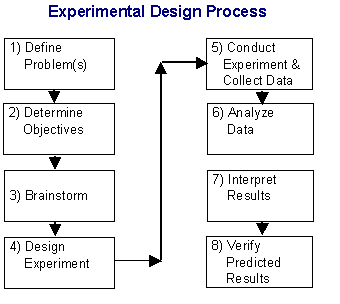Composing the Documents
Composing the Documents (hereinafter, the Session) is a hands-on session designed to get its participants started composing the text documents relevant to WorldOpp. The Session is the eighth of ten sessions of CNMCyber Bootcamps (hereinafter, the Bootcamp).
Designing concepts and experiments, composing and outlining text documents, creating text leads
Contents
Outline
Analyzing the Sources is the predecessor session.
How to design concepts
A concept is a mental image or understanding about a distinct entity in regard to its features. It is what the mind envisions when that entity of object is mentioned. Different people will will understand and perceive ideas in a different manner.
Methods of designing and developing concepts
- Definition - a definition of the concept is very helpful especially if it words that are difficult or unfamiliar to the intended audience.
- Classification - This is a description of how the concept is different or similar to other concepts and how it can be broken down into smaller parts to make comprehension easier. It is also important since it shows the big picture
- Narrating a process. - this is a step by step explanation of how a process works and how the concept is used in real life. For example, if a trainer was to explain the concept of Total Quality Management (TQM) to a class, he may start by stating the process, the steps followed and finish with the end result, say improved quality or productivity in the organisation that employs this process.
- Illustration - This can be done through use of examples and anecdotes which helps the learners better understand an idea. The idea is to give a relevant example that the learners are already familiar with to help the generate a mental image that they can relate with the concept being discussed.
How to design experiments
An experiment is a defined systematic procedure carried out in a controlled environment to test a hypothesis or illustrate a known effect. Experiments are used to show to what extent one or more variables affect an outcome. Experiments can be designed in different ways to collect this information.
Researchers use experiments to learn something new about the world, to answer questions or probe theoretic assumptions.
- The first step in designing an experiment is developing a hypothesis. The general question if first broken down testable hypothesis. A hypothesis is an explicit statement about cause and effect and it addresses the outcomes that would occur when specific factors are tested. An example of a hypothesis.
A hypothesis contains one or more dependent and independent variables. The dependent variables can be manipulated but the Independent variables can not. To determine how a bonus paycheck affects overall employee performance, the researcher may come up with a hypothesis such as ' Giving employees bonus paycheck improves productivity. In this case, The bonus is the independent variable and performance dependent variable. The employees performance in this case is pegged on giving bonuses. The researcher would then proceed to measure performance in times when the bonus was issued vis-a-vis when it was not to either confirm or dispute the hypothesis.
- Define Sample groups. After formulating the hypothesis to be tested, the researcher needs to define the sample group. The composition of this group is formed based on the characteristics required for the experiment. It is necessary to choose the ideal candidates to exclude side effects that could compromise the quality of the data gathered. For example, In an experiment to test the efficacy of a new drug, the target groups would comprise of people who already have the disease. Other demographic characteristics such as gender, age, educational level, etc should also be considered.
- Assign Subjects to groups - the third step involves randomly distributing the subjects to different experimental conditions. Randomization ensures there is no bias in the data collected since all subjects stand equal chance of ending up in the different experimental conditions. In the example above none of the patients would know if they are on the real drug or the placebo.
- Determine the sampling frequency - the researcher should determine how frequent the data should be collected. in clinical trials for instance, patients go for check - ups once in a month over a period of months or even years. This duration and frequency is purely based on the experience being conducted.
- Conduct the Experiment
- Analyze the results
- Validate (or reject) the predicted outcome
Creating the content
- Define the objective of your document;
- Guess what future users expect from the future document;
- Outline the document using three parts:
- Very briefly say what you are going to say;
- Say you intend to say;
- Summarize what you have said;
- Fill in the created outline;
- Try to predict how your user will perceive your content and, if needed, revise.
